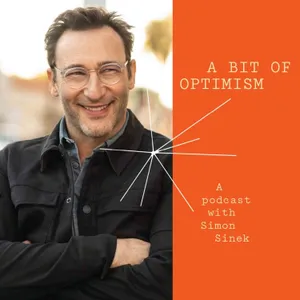Podcast Summary
Discovering a Tsunami's Past Impact at Caesarea: A grad student's discovery of a centuries-old tsunami at Caesarea reshaped archaeology, revealing the importance of studying natural disasters' impact on ancient civilizations and highlighting the value of scientific inquiry in our modern world.
Archaeologist Beverly Goodman made a groundbreaking discovery at the ancient city of Caesarea in Israel, which not only changed the understanding of the city's history but also potentially holds clues to prevent future natural disasters. At the time, Beverly was a grad student in her twenties, and while exploring the harbor, she discovered evidence of a tsunami that had struck the city centuries ago. This discovery, which was met with excitement and disbelief, has since reshaped the way archaeologists view Israel's history and the importance of studying the impact of natural disasters on ancient civilizations. Beverly's superpower as a geoarchaeologist lies in her ability to read stories in underwater sediments, making her a valuable asset in uncovering the secrets of the past. Her work at Caesarea not only showcases the importance of scientific inquiry but also highlights the potential implications of archaeological discoveries on our modern world.
Unexpected discovery of thick layer of shells, pottery, and pebbles during underwater archaeological expedition: Discovery of a 3-foot thick layer of shells, pottery, and pebbles challenges our understanding of ancient civilizations and highlights the importance of continued archaeological research.
During an underwater archaeological expedition, the team discovered an unexpected thick layer of shells, pottery, and pebbles, which led them to suspect a short-term catastrophic event such as a tsunami. This discovery was significant because the layer was nearly 3 feet thick, raising questions about its age and the potential impact on ancient structures like the Roman city of Caesarea. The city, which was a major seaport around the time of Jesus, was known for its advanced infrastructure, including an artificial harbor built by King Herod. This discovery challenges our understanding of the ancient world and highlights the importance of continued archaeological research.
Herod's Romanization of Judea: Herod the Great tried to blend Roman and Jewish cultures, building Roman structures and possibly causing a natural disaster, as recorded in the Talmud
Herod the Great, the Jewish king of Judea who ruled during the time of Jesus' birth, attempted to assimilate Roman culture into his kingdom by building grand Roman structures like the amphitheater in Caesarea. However, his reign was marked by controversial actions, such as ordering the murder of his beloved wife Mariamne and preserving her body in honey, and possibly causing a massive tsunami that destroyed the harbor of Caesarea around 115 AD. The Talmud, a Jewish text, provides one of the only written records of this event. The Talmud is a massive document consisting of over 5,000 pages that records the conversations of thousands of people over several hundred years. It is an essential text in Jewish scholarship and history. Herod's efforts to Romanize Judea and the potential natural disaster that struck Caesarea are significant reminders of the complex interplay between different cultures and historical events.
A Talmudic story about a kosher oven reveals signs of earthquake activity: The Talmud, an ancient Jewish text, uses stories of debates and supernatural signs to deepen readers' connection to God and the text.
The Talmud, an ancient Jewish text, is a complex work aimed at bringing its readers closer to God through every aspect of life, as interpreted by its rabbis. The text is not always straightforward and is best learned through debate and discussion with a partner. A story from the Talmud about a debate over a kosher oven and supernatural signs may not seem related to earthquakes at first, but the details of the story, including trees shifting position, walls leaning in, and water running backward, are actually signs of earthquake activity. The Talmud's authors may have included these details not as a lesson in natural history, but as a way to deepen the reader's connection to God and the text itself. The story serves as a reminder that interpreting Jewish law and arguing about its meaning is a sacred process that can lead to greater understanding and closeness to the divine.
Ancient texts and archaeological findings provide valuable insights when studied together: Interdisciplinary research between ancient texts and archaeology led to the identification of six tsunamis in a 1,000-year period, emphasizing the importance of context and critical thinking in historical research.
Ancient texts and archaeological findings can provide valuable insights when studied together. Beverly, a researcher, discovered a passage in an ancient text from Bavamecia that she believes describes a tsunami that occurred in 115 AD. While some scholars were skeptical, Beverly's findings were corroborated by archaeological evidence, including the discovery of human skeletons in non-burial contexts and thick layers of shell. This discovery led to the identification of at least six tsunamis that occurred over a 1,000-year period. Beverly's experience highlights the importance of considering the psychological and historical context of ancient texts, as well as the value of interdisciplinary research in deepening our understanding of the past. Criticism and skepticism from the scientific community were initially challenging, but Beverly saw it as an opportunity to refine her research and uncover new discoveries.
Witnessing the 2004 Indian Ocean tsunami sparks urgency to address Mediterranean tsunami risk: After the 2004 Indian Ocean tsunami, Israel recognized the need to address its Mediterranean tsunami risk, leading to the development of a tsunami plan, evacuation drills, and outreach programs.
The devastating 2004 Indian Ocean tsunami served as a wake-up call for researchers and governments to acknowledge and address the potential tsunami risk in the eastern Mediterranean. Beverly Goodman, an expert in the field, gained a new sense of urgency after witnessing the catastrophic event, which killed over 200,000 people. Prior to this, Israel, with its large beach populations, had largely ignored the issue of tsunami risk due to a lack of clear data and expertise. However, after the tsunami, Avi Shapira, the head of the Israeli government committee in charge of studying earthquakes and tsunamis, recognized the need for action. Goodman's research was instrumental in developing Israel's first tsunami plan, which included identifying at-risk areas and implementing evacuation drills and outreach programs, starting with schoolchildren. Today, tsunami warning signs are common on popular beaches in Israel, signaling progress in addressing this previously overlooked risk.
Preparing for Natural Disasters: Signs and Drills: Historical evidence shows that natural disasters like earthquakes and tsunamis will occur, and preparation through signs and drills can minimize damage and save lives.
While we cannot predict the exact timing of natural disasters like earthquakes and tsunamis, we can prepare for them. Signs and drills are crucial parts of this preparation. Historical evidence shows that such disasters have occurred in the past, and they will happen again. For instance, there is a high likelihood of another tsunami hitting Indonesia. Scientists and communities are working to minimize damage and save lives by adding more signs and conducting bigger and better drills. It's essential to stay informed and prepared. As one expert put it, "We'll have more after the break."






